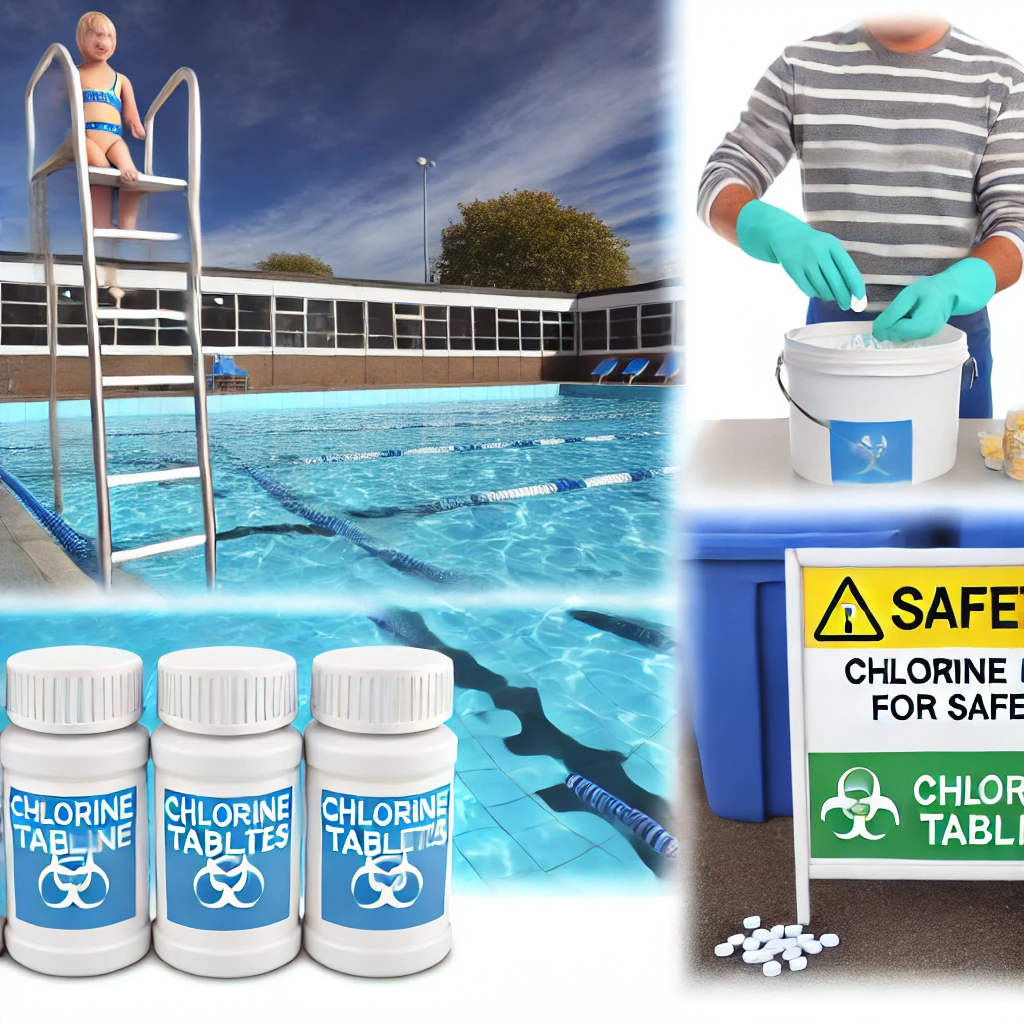Chlorine tablets are essential for maintaining the cleanliness and safety of public pools. These tablets help kill harmful bacteria and prevent the growth of algae. However, using chlorine tablets correctly is crucial to ensure both effectiveness and swimmer safety. Understanding the best practices for handling and using pool chlorine can make a significant difference in maintaining a safe swimming environment.

I. The Role of Chlorine Tablets in Pool Maintenance
Chlorine tablets play a vital role in pool maintenance. They work by slowly dissolving, releasing chlorine into the water. This chlorine kills bacteria, viruses, and other pathogens that can cause illness. Chlorine also helps keep the water clear and free of algae. Without regular chlorination, public pools would quickly become unsafe and uninviting. Therefore, using pool chlorine tablets is essential for maintaining a healthy swimming environment.
II. Proper Storage of Chlorine Tablets
Storing chlorine tablets properly is crucial for safety. Pool chlorine tablets should be kept in a cool, dry place. They must be stored in a well-ventilated area, away from direct sunlight and moisture. Exposure to heat or moisture can cause the tablets to degrade or even become hazardous. Additionally, chlorine tablets should be stored in their original containers, tightly sealed, and out of reach of children and pets. Following these storage guidelines ensures that the chlorine tablets remain effective and safe to use.
III. Safe Handling Practices
When handling chlorine tablets, safety is paramount. Always wear protective gloves and eyewear to avoid direct contact with the tablets. Chlorine can be irritating to the skin and eyes, so it’s important to minimize exposure. Avoid inhaling the fumes, as they can be harmful. When opening the container, do so in a well-ventilated area. Never mix chlorine tablets with other chemicals, as this can cause dangerous reactions. By following these handling practices, you reduce the risk of accidents and ensure the safe use of pool chlorine.
IV. Correct Dosage and Application
Using the correct dosage of chlorine tablets is critical for maintaining safe chlorine levels in the pool. Over-chlorination can cause irritation to swimmers’ eyes and skin, while under-chlorination can lead to bacteria and algae growth. The recommended dosage varies depending on the pool size and the number of swimmers. Pool managers should regularly test the water’s chlorine levels using a reliable test kit. Adjusting the dosage based on these readings ensures that the pool remains safe for everyone.
V. Using Chlorine Dispensers for Even Distribution
To ensure even distribution of chlorine, it’s advisable to use chlorine dispensers or floaters. These devices hold the chlorine tablets and release the chemical gradually as they float around the pool. This method prevents concentrated areas of chlorine, which can be harmful to swimmers. Additionally, using a dispenser helps maintain a consistent chlorine level throughout the pool. This approach not only enhances safety but also improves the effectiveness of the pool chlorine.
VI. Monitoring and Maintaining Proper Chlorine Levels
Regular monitoring of chlorine levels is essential for pool safety. Public pools should be tested at least twice a day to ensure chlorine levels are within the recommended range. The ideal chlorine level for a public pool is between 1 and 3 parts per million (ppm). If levels are too low, bacteria and algae can thrive. If levels are too high, swimmers may experience skin and eye irritation. Regular testing and adjustments are key to maintaining a safe and healthy swimming environment.
VII. Responding to Chlorine Imbalances
When chlorine levels become unbalanced, immediate action is required. If chlorine levels are too high, it’s important to close the pool until levels drop to a safe range. This can be done by stopping the addition of chlorine and allowing the levels to decrease naturally. In some cases, adding fresh water can help dilute the chlorine. If levels are too low, additional chlorine tablets should be added and the pool should remain closed until the levels are back within the safe range. Swift responses to chlorine imbalances prevent potential health risks to swimmers.
VIII. Educating Pool Staff and Swimmers
Education is a key component of maintaining pool safety. Pool staff should be thoroughly trained on the proper use and handling of pool chlorine tablets. They should also be aware of the signs of chlorine imbalance and know how to respond effectively. Additionally, educating swimmers about pool rules, such as showering before entering the pool, can help reduce the demand for chlorine. Well-informed staff and swimmers contribute to a safer and more pleasant swimming experience.
IX. Environmental Considerations
While chlorine is essential for pool safety, it’s important to be mindful of its environmental impact. Chlorine can be harmful to the environment if not managed properly. Pool managers should ensure that chlorine levels are kept within the recommended range to minimize any potential runoff into the surrounding environment. Additionally, using eco-friendly chlorine alternatives when possible can reduce the overall environmental footprint of the pool.

X. Conclusion
In conclusion, chlorine tablets are a crucial element in maintaining the safety and cleanliness of public pools. By following best practices for storage, handling, dosage, and monitoring, pool managers can ensure that pool chlorine is used effectively and safely. Regular testing and quick responses to chlorine imbalances help protect swimmers from potential health risks. Additionally, educating staff and swimmers on the importance of proper pool maintenance contributes to a safer and more enjoyable swimming environment. Ultimately, the responsible use of chlorine tablets is key to ensuring the health and safety of everyone who enjoys public pools.



